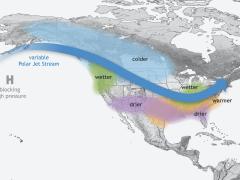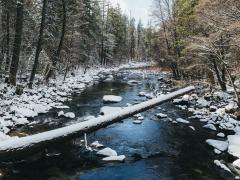New USGS Strategy Harnesses Science to Tackle Wildfires Before, During, and After the Flames
Last year, extreme heat and extensive drought led to a series of large wildfires across the western United States. Wildfires covered 10,122,336 acres of the U.S. in 2020, and federal fire suppression costs alone totaled nearly $2.3 billion. In drought conditions, dry, hot, and windy weather combined with dried out (and more flammable) vegetation can increase the potential for large-scale wildfires.
To help address growing wildfire-related challenges, the U.S. Geological Survey (USGS) has rolled out a new Wildland Fire Science Strategy that lays out the critical needs for wildfire research over the next five years. Released in February, this strategy can be used to better understand the balance between fire’s benefits and its detrimental impacts.
The new fire strategy will guide future USGS research and help the agency provide timely and relevant information for land managers to tackle fire risks before they occur, during wildfire response, and after the flames go out. It also addresses emerging priorities, such as climate change and supporting rural communities and tribes.
The new strategy also emphasizes the importance of bridging fire and post-fire science to develop the most effective response, recovery, and pre- and post-fire mitigation strategies to reduce risk. It highlights the use of computer simulations to help predict burn severity, which can then pinpoint areas that would likely be vulnerable to hazards during and after fires. Recognizing that post-fire hazards span many branches of science, the strategy integrates different research branches to improve planning for and response to fire-related disasters.
Researchers across USGS are working with the interagency fire community to expand the use of artificial intelligence, machine learning, and other rapid-computing capabilities. For example, USGS uses artificial intelligence with satellite imagery to detect fire boundaries and develop burn severity maps, and to identify distribution and abundance of fire-adapted invasive species like cheatgrass in the Great Basin.
“This strategy will help the local, state, tribal, and federal collaboration to address the wildfire issue that our nation is experiencing,” said Jeff Rupert, Director of the Department of the Interior’s Office of Wildland Fire. “The science needs identified in the strategy will support firefighters that respond to wildfires and prevention efforts to protect communities, resources, and people.”
To learn more, read the USGS Wildland Fire Science Strategy. Additionally NIDIS and USGS partnered on the March 3 webinar on Ecological Drought: Drought, Wildfire, and Recovery. Watch USGS Wildland Science Coordinator Paul Steblein give a presentation (32:28) during the webinar on the Strategy and its relevance to ecological drought and wildfire management.




